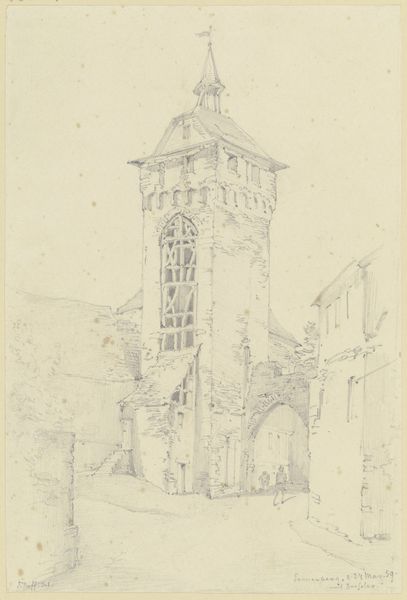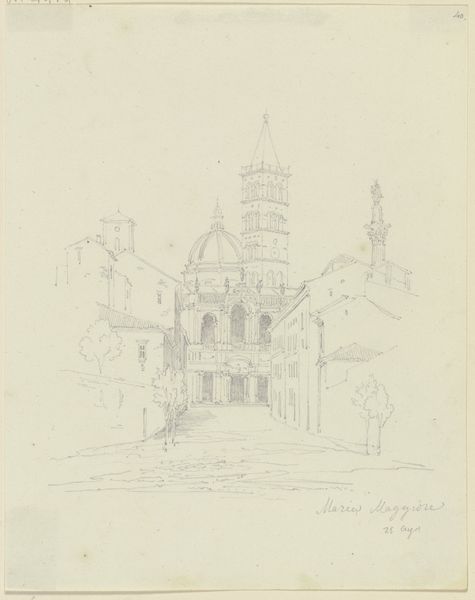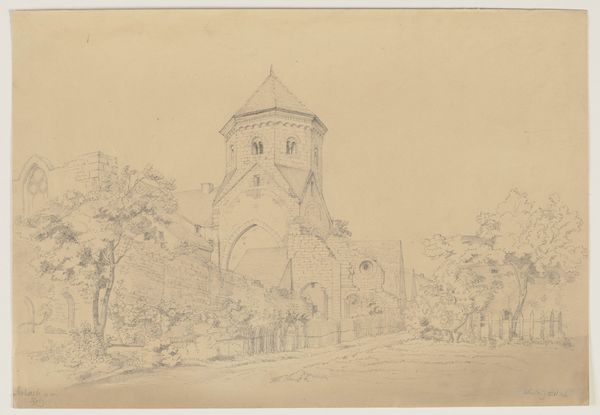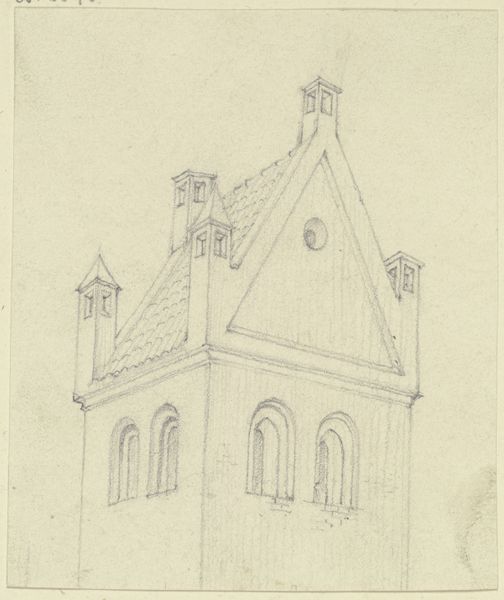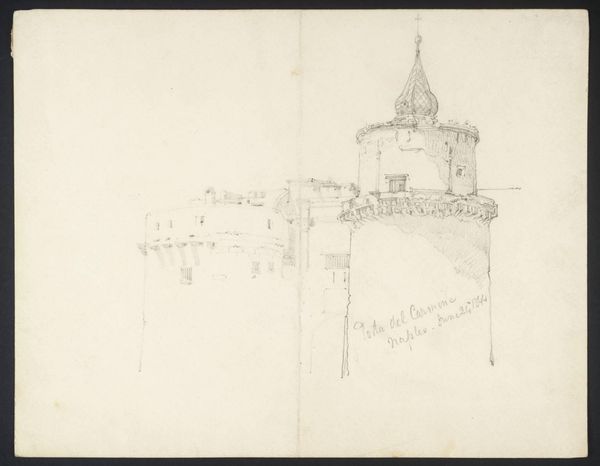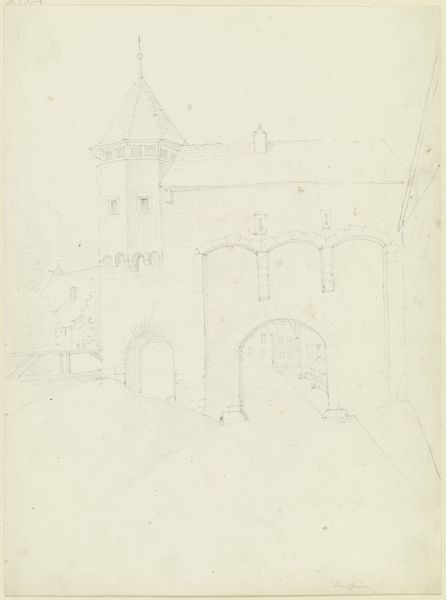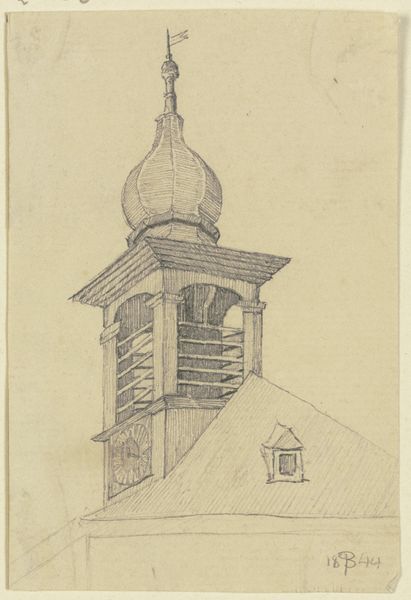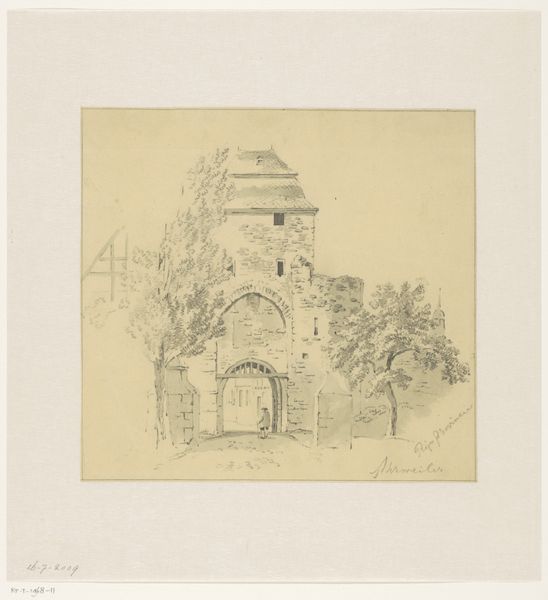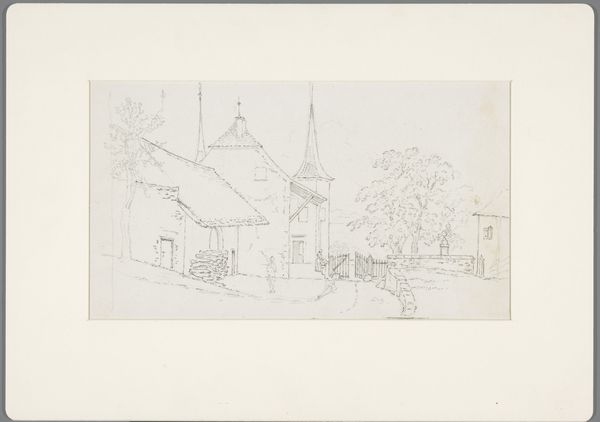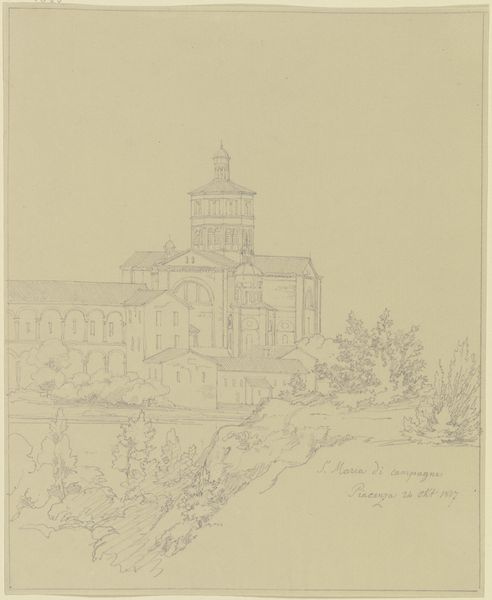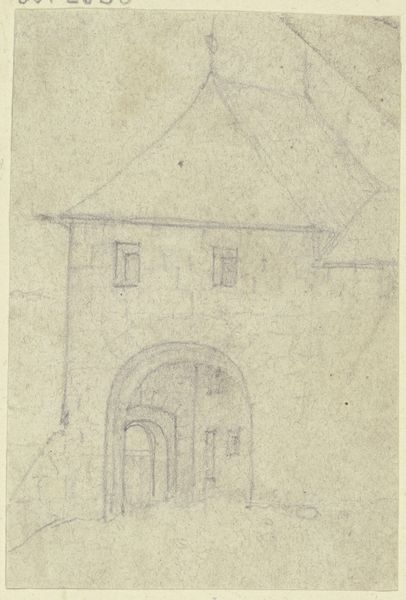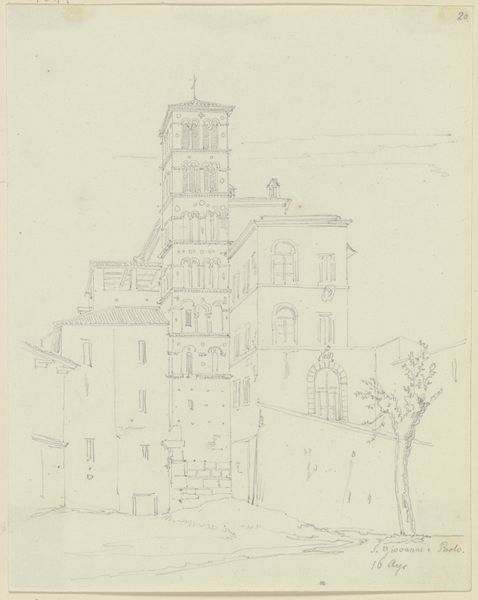
Fausttürmchen am Kloster Maulbronn (Original Title) 14 - 1848
0:00
0:00
Copyright: Public Domain
Editor: So, here we have Friedrich Wilhelm Ludwig’s "Fausttürmchen am Kloster Maulbronn," a pencil drawing from 1848, housed at the Städel Museum. The building feels so solid, yet the soft pencil strokes create a wistful, almost dreamlike mood. What do you see in this piece? Curator: Beyond the beautiful rendering, I see a fascinating commentary on power and cultural memory embedded in the architectural details. This isn't just a pretty picture; it's a conversation about the very structures, both literal and figurative, that shape our understanding of history. Editor: Power? How so? Curator: Think about it: the tower itself, a remnant of the past, positioned alongside the natural world, suggests a tension between human authority and the uncontrollable forces of nature. Ludwig, living through a period of political upheaval, uses this contrast to comment on the instability of societal structures. How might its placement near a monastery, traditionally a site of male religious authority and learning, further inform this critique? Editor: I hadn’t thought about it that way. The Romantic era focus on nature made me miss that it's also juxtaposing church power. Are the details, like the half-timbering, significant too? Curator: Absolutely! The visible framework reveals a structure vulnerable to the passage of time and societal pressures. The drawing underscores the fragility of established systems and the need to question the narratives they propagate. We see how cultural heritage, especially architectural heritage, is itself a constructed and interpreted phenomenon, loaded with symbolic weight that tells particular stories while silencing others. Does it invite a reassessment of values that have historically underpinned such systems? Editor: That’s fascinating. So, it’s less about admiring a tower and more about interrogating the ideas it represents. Curator: Precisely. This work prompts us to critically examine what we consider ‘stable’ or ‘unchanging.’ Editor: I never would have arrived at this layered meaning on my own. This approach encourages the consideration of socio-political concerns alongside artistic expression. Curator: Indeed! It reveals the inherent power dynamics and political undertones that subtly permeate our cultural landscapes.
Comments
No comments
Be the first to comment and join the conversation on the ultimate creative platform.
